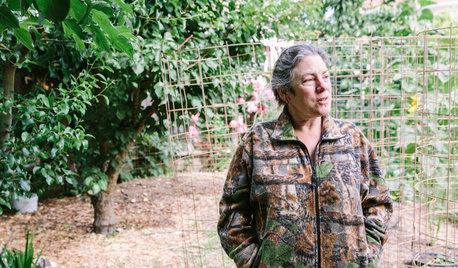how do i get anything to grow in this soil?!?!?
KerriGerrish
10 years ago
Related Stories

FARM YOUR YARDHow to Get Good Soil for Your Edible Garden
The nutrients in your soil feed the plants that feed you. Here are tips on getting it right — just in time for planting season
Full Story
GARDENING GUIDESGrow a Beautiful Garden in Alkaline Soil
Got alkaline soil? Learn how to manage it and the many beautiful plants that will thrive in this ‘sweet’ soil
Full Story
GARDENING GUIDESGet the Dirt on Your Garden’s Soil
Understand how your soil supports your plants so you can ensure your garden’s success
Full Story
HOUSEPLANTSHow to Grow Orchids Indoors
Orchids are the exotic aristocrats of the flower world and can make themselves comfortable in almost any home
Full Story
FARM YOUR YARDTo Get the Food They Believe In, These Urbanites Grow Their Own
Home gardeners farming on their city lots find that local, organic food isn’t the only reward
Full Story
GARDENING GUIDESHow to Stop Worrying and Start Loving Clay Soil
Clay has many more benefits than you might imagine
Full Story
GARDENING GUIDESGardening Solutions for Heavy Clay Soils
What’s a gardener to do with soil that’s easily compacted and has poor drainage? Find out here
Full Story
GARDENING GUIDESInvite Cellophane Bees to Your Garden by Providing Patches of Bare Soil
Look for cellophane bees (Colletes) pollinating flowering trees and shrubs in U.S. gardens this spring
Full Story
GARDENING GUIDESHow to Pick a Mulch — and Why Your Soil Wants It
There's more to topdressing than shredded wood. Learn about mulch types, costs and design considerations here
Full Story
GARDENING GUIDESHouzz TV: Make a Worm Bin for Rich Soil and Happy Plants
A worm-powered compost bin that can fit under a sink turns food scraps into a powerful amendment for your garden. Here’s how to make one
Full StoryMore Discussions






treebarb Z5 Denver
gjcore
Related Professionals
Bellflower Landscape Architects & Landscape Designers · Cottonwood Landscape Architects & Landscape Designers · Mount Wilson Landscape Architects & Landscape Designers · Jackson Landscape Contractors · Middletown Landscape Contractors · Harrisburg Landscape Contractors · Inglewood Landscape Contractors · Lemoore Landscape Contractors · Saint George Landscape Contractors · San Bruno Landscape Contractors · Tehachapi Landscape Contractors · Waterford Landscape Contractors · Weslaco Landscape Contractors · Antioch Landscape Contractors · Fort Lee Solar Energy Systemsdigit
david52 Zone 6
popmama (Colorado, USDA z5)
littlelizzy123
ZachS. z5 Platteville, Colorado
david52 Zone 6
mayberrygardener
bob_in_colorado